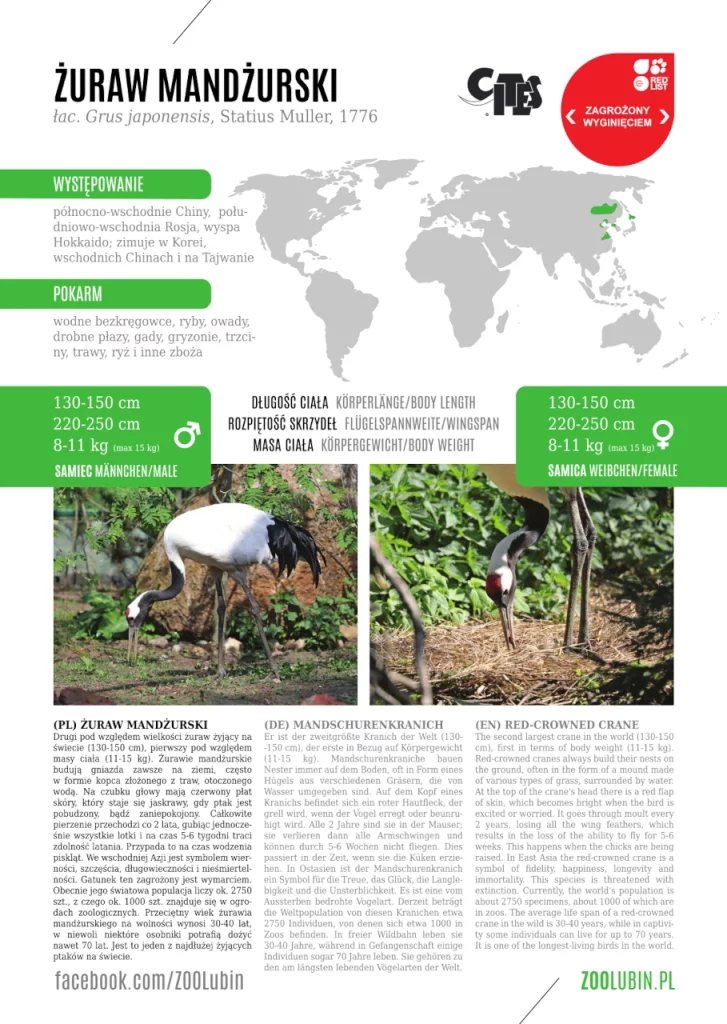
DOWNLOAD THE SPECIES LABEL – PDF file (size 3157 KB)
Red-crowned crane
łac. Grus japonensis, Statius Muller, 1776
The second largest crane in the world; first in terms of body weight. Red-crowned cranes build their nests on the ground, in the form of a mound of various types of grass. At the top of the head they have a red skin flap, which becomes bright when the bird is excited or upset. It goes through moult every 2 years, losing all the wing feathers, which results in the loss of the ability to fly for 5–6 weeks. This happens in the time when the chicks are being raised. In East Asia the red-crowned crane is a symbol of fidelity, happiness, longevity and immortality. This species is threatened with extinction. The world population currently counts about 2750 specimens, about 1000 of which are in zoos. The average lifespan of the red-crowned crane in the wild is 30–40 years, while in captivity it can live for up to 70 years. It is one of the longest-living birds in the world.
Distribution: Northeast China, Southeast Russia, Hokkaido Island; winters in Korea, East China and Taiwan
male / female
body length: 130–150 cm
wingspan: 220–250 cm
body mass: 8–11 kg (max. 15 kg)
